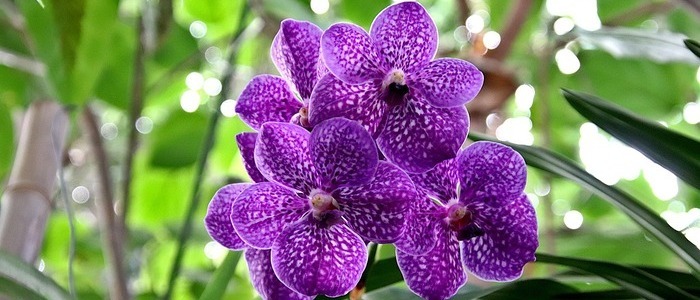Welcome to the fascinating world of the Purple Shamrock Plant! Over the years many gardeners, botanists, and nature lovers have expressed interest in this unusual and stunning plant.. This plant which is native to Europe but found all over the world, this plant is known for its showy purple flowers and interesting foliage.
It is an easy-to-grow addition to any garden, but it is also drought tolerant and requires minimal care. The purple shamrock plant can be used as a border or edging in your outdoor space, adding texture and color to your landscape. Whether you’re looking for something unusual for your garden or just want to add a splash of color, the purple shamrock plant is an ideal choice.
With its stunning blooms and unique foliage, it will bring a touch of elegance to your garden. And with the right care, this plant can last for years! So why not give this beautiful flower a try?

Purple Shamrock Plant Frequently Asked Questions
Do purple shamrock plants like sun or shade?
Purple shamrock plant prefer bright, indirect light, but can also tolerate partial shade. Direct sunlight can scorch the leaves and cause damage to the plant. It is best to place the plant in a location where it can receive a few hours of morning or afternoon sun, and then be shaded for the rest of the day.
How do I make my purple shamrock plant fuller?
You can pinch back the stems and foliage of your purple shamrock to make it fuller. This will encourage new growth and branching, resulting in a bushier plant. Another reliable method is to fertilize the plant with a balanced fertilizer every two weeks during the growing season to promote healthy growth.
Tips for Caring for the Purple Shamrock Plant
Caring for the purple shamrock plant is easy and rewarding. Start by giving it a bright spot with indirect light, near a window or next to an east-facing window. Rotate it regularly so that all sides get an equal amount of light. This process will help create strong stems and vibrant foliage. Water your plant when the soil feels dry, about once a week, and let the water drain away completely. Keep your purple shamrock’s soil evenly moist and mist the leaves regularly,
This plant prefers warm, humid conditions, so make sure your home is properly ventilated. You should also check the leaves for signs of pests, as they can easily take up residence on purple shamrock plant. If you notice any pests or diseases, treat them right away with natural pest control solutions to keep your shamrock healthy.
Feed your plant with a balanced liquid fertilizer every other month. For a healthy plant, prune away dead or damaged foliage when you see it. With these simple steps, you will enjoy watching your beautiful purple shamrock grow and flourish for years to come.
Methods for propagating the purple shamrock plant
Propagating purple shamrock plants is very easy and an ideal way to increase your collection. There are a few different methods you can use for propagating your purple shamrocks: These methods include plant division, stem cuttings and leaf cuttings
1. Division – When the plant has multiple shoots, you can divide them off and replant in separate containers filled with fresh soil. This is a great way to create multiple plants in one go.
2. Cuttings – Cut off the shoots from the parent plant and place them in soil or water until they form roots. This method is great for propagating if you only need a few new plants.
3. Leaf cuttings – When taking leaf cuttings, snip off a healthy leaf with its stem from the parent plant. Place the leaf in soil or water and wait until it produces roots and new growth before replanting.
With these simple methods, you can easily increase your purple shamrock collection and keep them looking vibrant in your home!
Tips on How to Prune the Purple Shamrock Plant
The purple shamrock plant is known for its beautiful, bright foliage and showy flowers. Pruning your purple shamrock plant is essential in order to keep it healthy and looking its best! Here are some tips on how to prune your purple shamrock plant:
1. Start by removing any wilted or dead leaves/blooms. These are taking up nutrients from the plant and won’t be able to re-grow, so it’s best to remove them as soon as possible.
2. Trim any overgrown stems back to promote tidy growth and encourage a fuller, more attractive shape. Make sure you use sharp, clean tools for the best results.
3. Cut away any stems that are crossing over or growing inwards. This will help to ensure your plant maintains an even, balanced shape.
4. Finally, remove any yellowing leaves or blooms. These too will be taking up nutrients from the plant and won’t be able to re-grow, so it’s best to remove them.
Once you’ve finished pruning, your plant should look much healthier and more vibrant! With regular maintenance pruning, your plants will stay in great condition.
Common Problems that can Affect the Purple Shamrock
Here are some of the common problems associated with growing the purple shamrock plant:
– Inadequate sunlight: The purple shamrock plant needs at least six hours of direct sunlight per day to thrive. If the plant is not receiving enough light, it can become weak and leggy.
– Overwatering: This plant is very sensitive to overwatering and does not do well in soggy soil. Make sure to only water when the soil is dry and avoid letting the plant sit in standing water.
– Pests: Spider mites, aphids, and mealybugs are all common pests that can cause damage to the purple shamrock plant. If you notice any signs of infestation, treat it promptly with an insecticidal soap solution.
– Temperature: The purple shamrock plant prefers warm temperatures and can suffer if exposed to cold drafts or freezing temperatures. Keep the plant in an area away from drafty windows or doors, and try to keep the temperature between 65-80°F (18-26°C).
Conclusion
In conclusion, the purple shamrock plant is a unique and beautiful addition to any garden or home. Its vibrant color makes it stand out among other plants and its hardy nature ensures that it can survive even in difficult conditions.
Pruning and careful maintenance are essential for keeping this lovely plant healthy and thriving. With just a bit of effort you can have a little bit of the Irish countryside in your garden or home.













